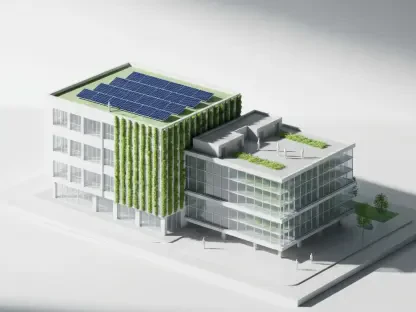Continuing to focus on sustainability within the European Union, the Buildings Directive 2024 stands as a major market force impacting construction and property sectors. Aiming for climate neutrality by 2050, this legislation introduces stringent measures to significantly cut energy usage and CO₂ emissions across the EU building stock. This market analysis delves into key trends and future projections that define the impact of these initiatives, underlining comprehensive objectives, sector transitions, and the broader market transformation.
Decoding Legislative Context and Market Reactions
Recent developments in the construction sector underscore a strong regulatory backdrop that has evolved over decades. As the urgency of climate issues escalates, the EPBD 2024 translates past regulatory momentum into more robust policies, urging a market-wide pivot toward enhanced energy efficiency. The directive sets a clear legislative pathway influencing both existing structures and future market dynamics. This transformation engages a wide spectrum of stakeholders with potential challenges and opportunities inherent in adapting to rapidly changing standards.
Shaping Market Trends with Zero-Emission Targets
New Construction Innovations: Embracing Zero-Emissions
EPBD 2024 integrates mandatory zero-emission benchmarks for new buildings by 2030, propelling early compliance in public sectors by 2028. As market players navigate CO₂ life cycle assessments integrated throughout construction phases, this directive redefines existing practices and encourages strategic innovation. These changes represent a dual-faceted challenge—demanding proactive market strategies while presenting potential operational savings and distinct competitive advantages in a progressively eco-conscious arena.
Renovation as a Catalyst: Upgrading the Existing Market Landscape
Market discourse has intensified around retrofitting over half of non-residential buildings by 2033, driving an impetus to redefine value in existing assets beyond new structures. Key projections indicate that comprehensive retrofitting impacts market attractiveness, raising property value while reducing operational expenses. Effective implementation requires meticulous planning, but successful case studies reveal bright prospects for entities able to transition smoothly within this evolving framework.
Driving Digital Transformations in Construction
Digitization plays a pivotal role as the directive mandates the integration of digital models and automated systems. These tools are essential in streamlining planning and verifying projects, adhering to EPBD 2024 regulations. Building Information Modeling (BIM) leads a revolution in data accuracy and process automation, decreasing perceived complexities and accelerating market adaptation. Cross-regional variability in digital uptake shapes the digital landscape and offers policymakers insights into tailored implementation strategies.
Future Projections and Emerging Market Dynamics
Looking to the horizon, the EPBD 2024 indicates broader trends that are potentially transformative for stakeholders. Technological advancements in renewable energy, innovative construction materials, and evolving methodologies stimulate an unprecedented market shift. Industry experts anticipate significant growth within this green transformation, positing that the directive will not only reshape European standards but potentially influence global sustainable construction benchmarks by setting an ambitious example.
Insights and Strategic Implications
Market participants must adopt a multifaceted strategy in response to the evolving regulatory environment shaped by EPBD 2024. Emphasizing the transition to new technologies, optimization of energy use, and rigorous compliance, companies can remain ahead in the burgeoning eco-friendly marketplace. By fostering innovation across market dynamics and technologies, EPBD 2024 provides a fertile ground for sustainable growth, encouraging businesses to align with long-term environmental objectives.
Evolving the Fabric of Sustainability in Europe
The analysis of EPBD 2024 reveals its profound role in shifting the building sector towards sustainability, yielding immediate and far-reaching effects. Beyond legislative adherence, the initiative represents a larger narrative of sustainable growth and innovative practices. The collective effort of stakeholders committed to these shifts promotes meaningful changes in market adoption and offers substantial benefits to forward-thinking market actors.









